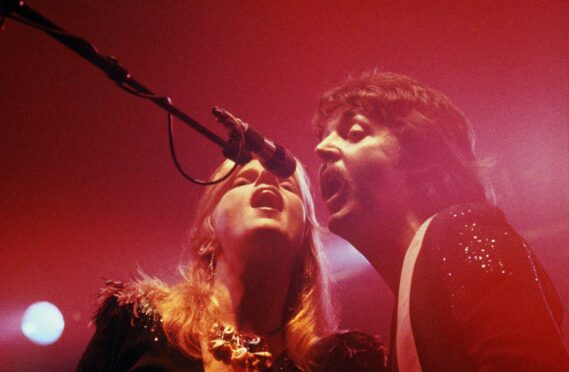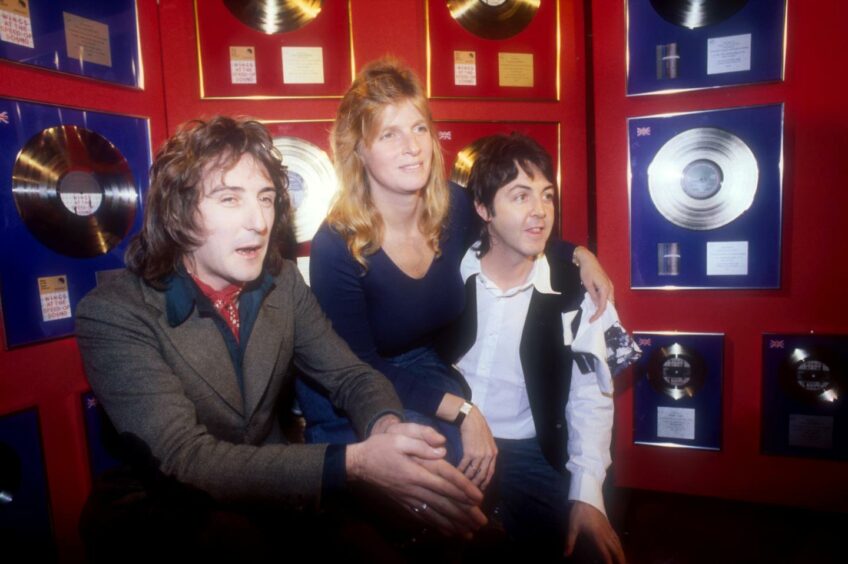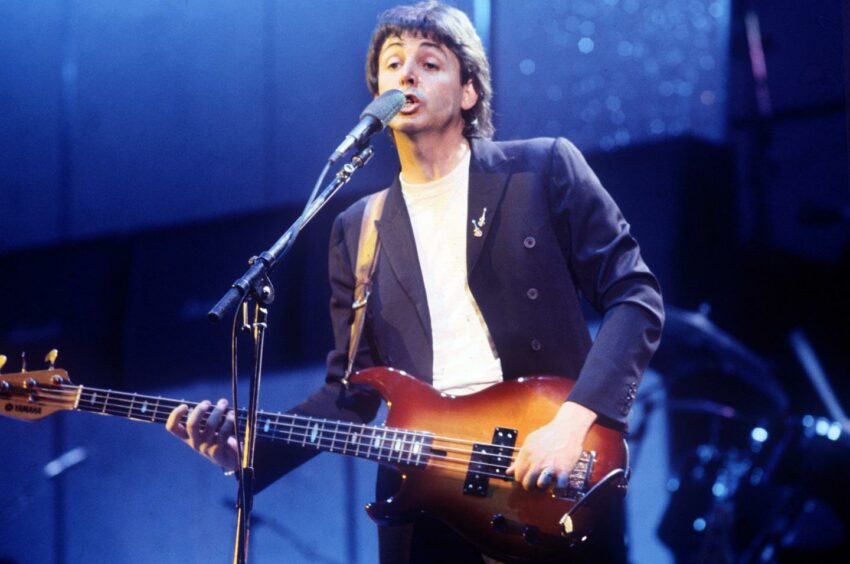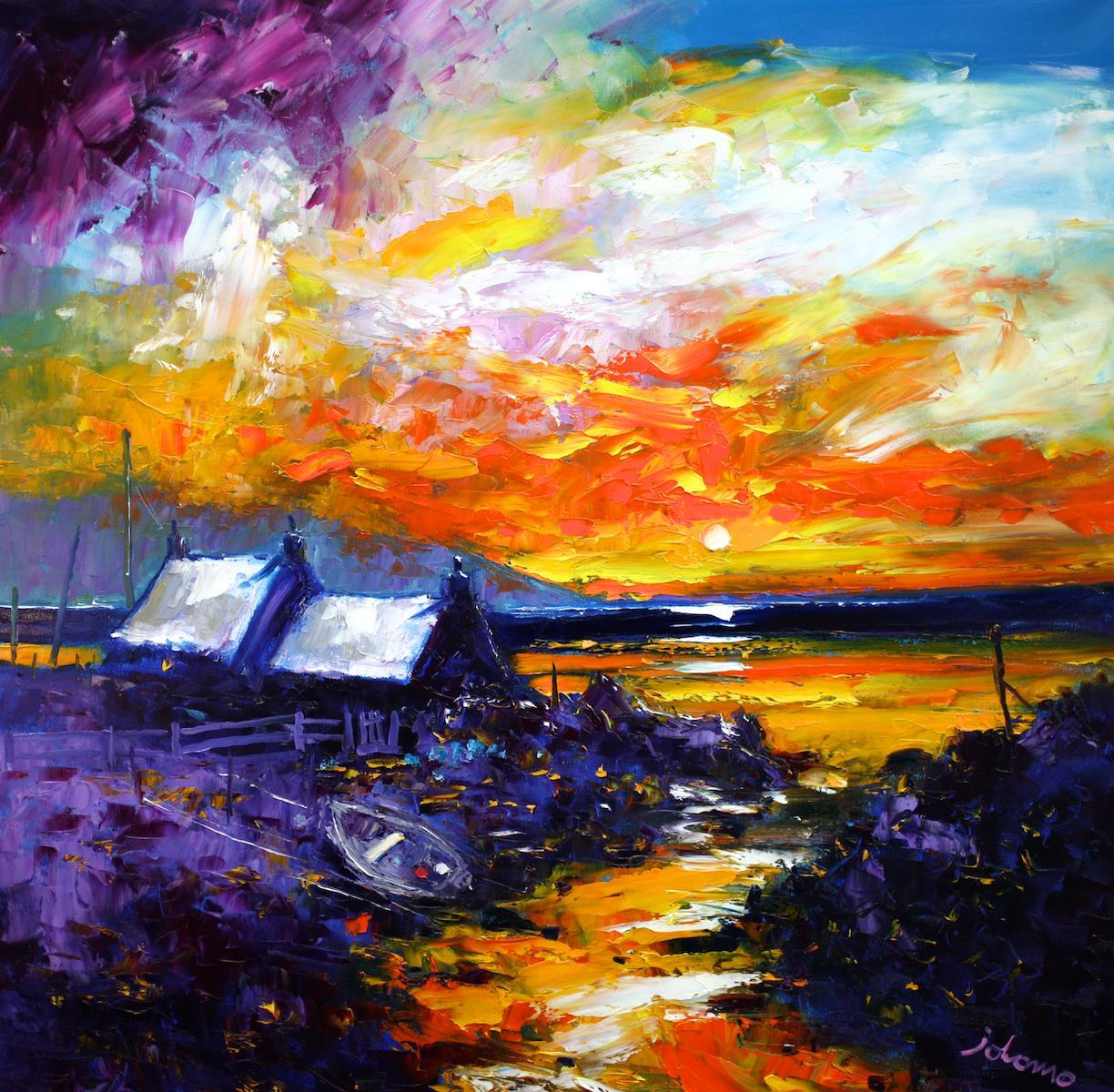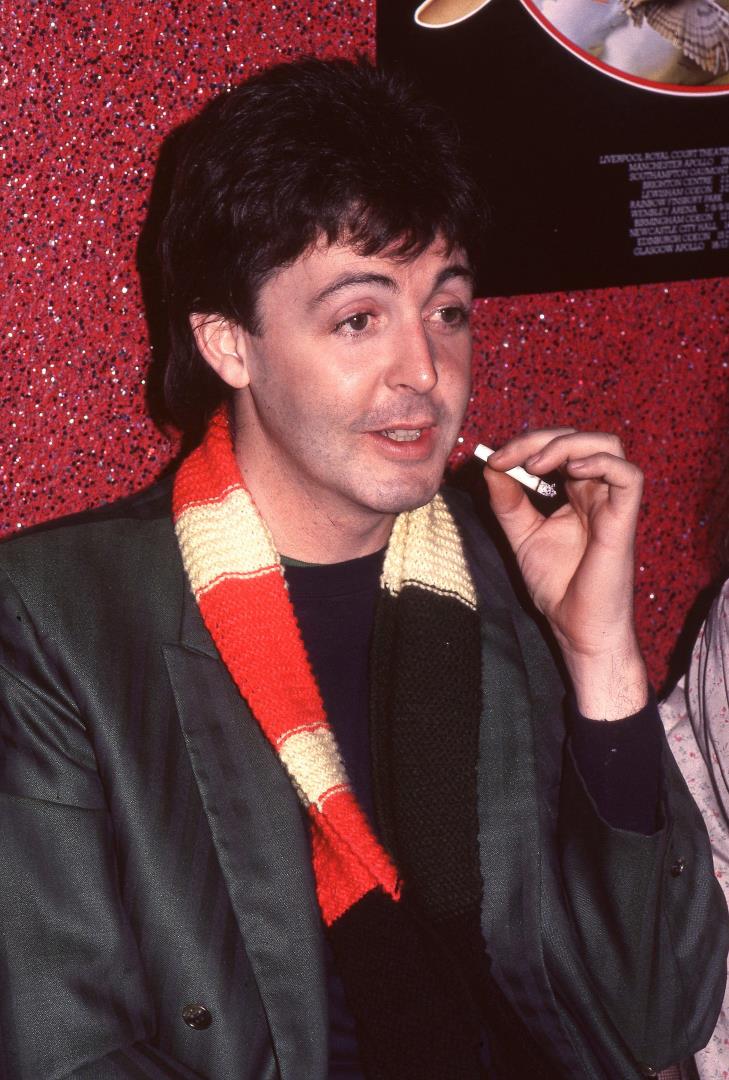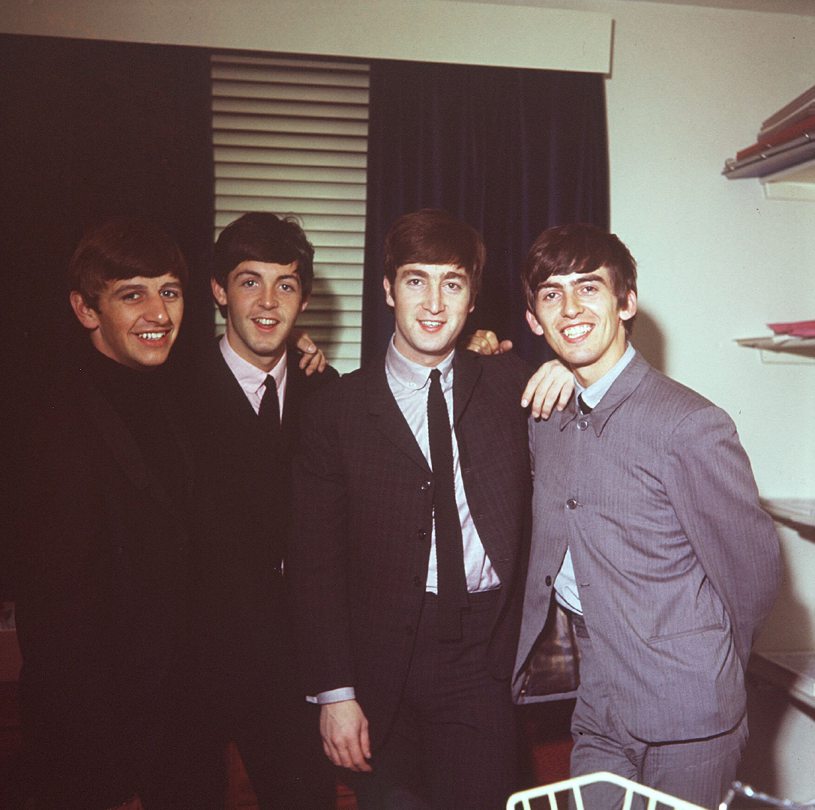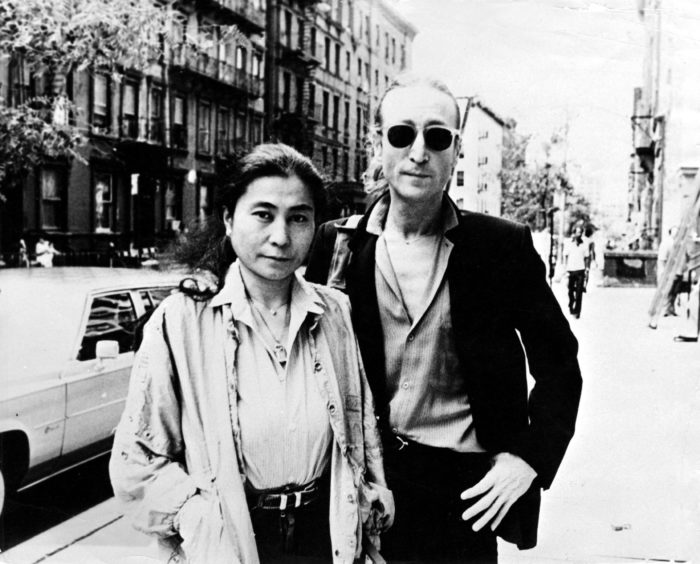He is one of the world’s most famous and successful singer-songwriters – and Paul McCartney and his Beatles colleagues are inextricably linked with their home city of Liverpool.
But McCartney, who created many of the Fab Four’s timeless classics either on his own or with John Lennon, subsequently enjoyed huge popularity with Wings during the 1970s and early 1980s.
And now, he has revealed how some of the band’s most enduring songs were composed while he was in Scotland with his wife, Linda, inspired by the landscapes and local culture as they enjoyed time away from the limelight.
McCartney has spoken about the process through which he wrote and recorded Mull of Kintyre, which later spent more than two months at the summit of the British charts – and detailed the background to such well-known ditties as Jet from the platinum-selling album Band on the Run.
In August 1973, the band started rehearsals for that work at the McCartneys’ Scottish farm.
And although the tracks were eventually laid down in Lagos in Nigeria, the Tartan influence on the LP was distinctive.
While Paul and Linda were at their property in Kintyre, it suddenly occurred to them that even though they loved the sound of the bagpipes, most of the compositions dated back decades or even centuries.
Therefore, despite appreciating the perils associated with entering uncharted territory – “A new Scottish song written by a Sassenach? That would be fun” – Paul turned his thoughts to the project in collaboration with a local band.
He was aware of Lennon’s family link
He had learned about the rugged beauty of the Highlands from his former bandmate Lennon, who regularly holidayed in Durness in Caithness: a remote location that prompted him to later pen the poignant In My Life.
And Paul has revealed his own interest in Gaelic culture and heritage in his new book, The Lyrics, which is also an autobiography of his remarkable life.
He said: “Very early on, John had Scottish relatives and he would go up there and stay in a croft and I thought: ‘Wow, that’s really romantic’, so this song (Mull of Kintyre) was a way of plugging into that feeling and being proud of this area where I was living.
“One day, it occurred to me there were no new Scottish songs; there were loads of great old songs that the bagpipe bands played, but nobody had written anything new.
“So that was an opportunity to see whether I could.
“I thought my way into the minds of travelling soldiers returning home and that dream of coming back to the beautiful country, the beautiful village.
“The point of view of the homecoming person is deep in people’s souls.
“Sometimes, we do this song in concert when we are are in expat places like Canada and New Zealand.
“We’ve got some security guys who are Scottish and you can see them welling up.”
“When the time came to record, I had the local pipe major come up to the house with his pipes, a gentleman named Tony Wilson.
“I made the song and we recorded the basic tracks.
“Then, a few days later, we had a recording session up there in the evening with lots of beer for all the boys in the band, although they weren’t allowed to drink it until afterwards, because some of them were quite young and it could have gone horribly wrong.
“And there they were, all dressed up in their pipers’ outfits. It was quite emotional hearing the band play.
“It was a very fun evening and they loved it (the song) and told me: ‘Oh aye, it’s a No 1 hit.”
Paul has admitted he didn’t share their optimism, given the transformation in musical tastes that had happened in Britain in the second half of the 1970s.
As he said: “The big thought from me and from everyone was that it was 1977; we couldn’t release the song in these days of punk.
“I mean, it was madness, but I just thought: ‘Well, sod it’. And even though I was a Sassenach, it became a big Scottish song, it ended up spending nine weeks at number one and I think it is still something like the fourth best-selling single in the UK ever.
Jet was actually the name of a pony, a little Shetland pony that we had for the kids on the farm.”
Paul McCartney
“And the strange thing is that even punks liked it.
“One day, Linda and I were in traffic in London in the West End somewhere and there was this big gang of punks who looked very aggressive and we were kind of crouching a little bit, trying not to get noticed and thinking ‘Jesus, what are they gonna do?’.
“And then they saw us, and one of them comes to the car, so I wound down the window a bit and he goes: ‘Oy Paul, that Mull of Kintyre is f****** great!”
A few years earlier, Paul was still in the process of regaining the momentum that had been lost after the break-up of The Beatles.
Yet although he had only temporarily mislaid his genius, not lost it altogether, Band on the Run proved a massive breakthrough in the evolution of Wings.
The LP cover featured the likes of acting royalty Christopher Lee and James Coburn, chat show king Michael Parkinson and boxing world champion John Conteh and it soon started attracting positive reviews and sales.
The title track was a stand-out – as was Jet, which flew into the stratosphere.
Paul knew he was under pressure with Wings, but he was in his element with his young children and Linda in the Highlands and the melodies just flowed.
He recalled: “Jet was actually the name of a pony, a little Shetland pony that we had for the kids on the farm.
“My daughter Mary was born in 1969, so in 1973, when the song was written, she was four. (The renowned fashion designer) Stella would have been two, so they were little.
“I remember exactly how the song started. We were in Scotland and I had my guitar, surprise surprise.
“There was a big hill which had the site of a fortress on top of it, an old Celtic fort.
It was an inspirational place for Paul
“It was an extraordinarily good vantage point. The kind of place where you can imagine the Vikings coming up the hill while we poured oil on them or, if that didn’t work, throw some spears at them.
“I had told Linda I would be gone for a while and, as I lay there on this beautiful summer’s day, I let my mind wander.
“Some of the imagery is drawn from the relationship between Linda and her father.
“He was a cool guy – very accomplished – but he was a little too patriarchal for my liking. I got on well with him, but he was a bit strict.
“That’s where the ‘sergeant major’ comes from in the song. He also comes partly from Gilbert & Sullivan and the ‘very model of a modern Major-general. (From The Pirates of Penzance).
“Anyway, I made it up, played it on the guitar, came back to the farmhouse and played it for Linda.
“I asked her what she thought. She liked it!
“And that was what came out of my afternoon up on the hill. This wasn’t Mount Sinai and I didn’t come back with the tablets of the Law, but I did come back with Jet.”
And, almost 50 years later, it is one of his most popular post-Beatles songs.
Paul loved flying solo at the Spirit of Ranachan studio in Campbeltown, where he could quite literally record tracks as a one-man band.
One of the gems from his career was Coming Up, which he likened to working on his own in a chemistry professor’s laboratory.
The song had originally been played live in Glasgow when Wings were winding down. But he decided to give it some special treatment.
The result was a smash hit in both Britain and the United States.
It was all his own work
He said: “I got into the studio in Scotland and started working, doing the drum track. Then I put some bass on it. I was messing around.
“It was my more experimental studio recording that got released at what turned out to be the start of my solo career (in 1980).
“We did a nice video for it, directed by Keith McMillan, in which I pretended to be the all the people who had played the instruments. Which, as it turns out, I had been.
“It was nice that Coming Up went to No 1 in America. I don’t fret if a song doesn’t make number one, but the status is an indicator that people like it.”
He added: “John (Lennon) described Coming Up somewhere as ‘a good piece of work’. He’d been lying around not doing much and it sort of shocked him out of his inertia.
“So it was nice to hear it had struck a chord with him.
“After the break-up of The Beatles, we had no contact, but there were things we needed to talk about. Our relationship was a bit fraught sometimes.
“But gradually, we got past all that and, if I was in New York, I would ring up and say: ‘Do you fancy a cup of tea?”
- Paul McCartney’s The Lyrics is published by Allen Lane.
